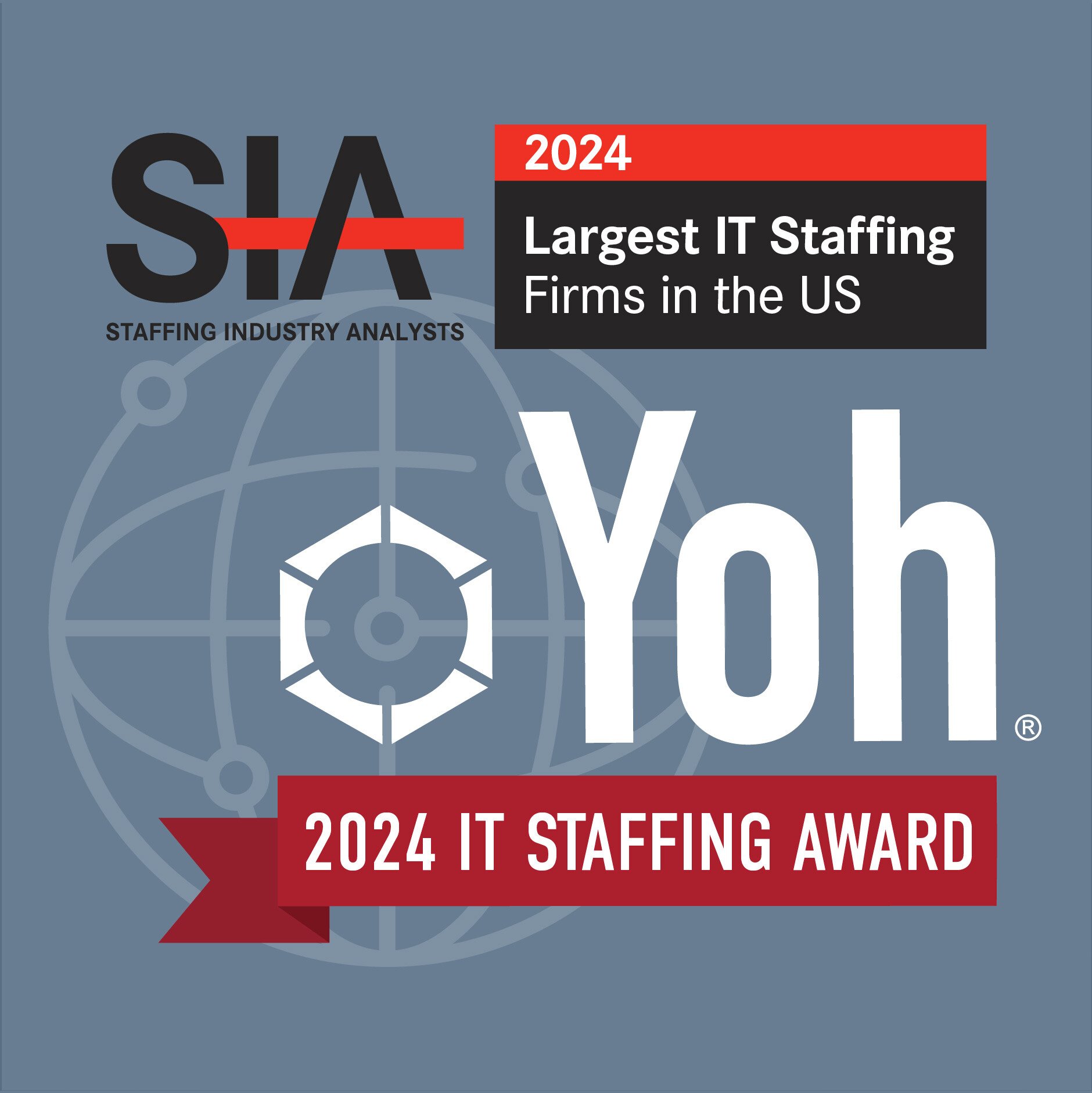Information Technology
Expert Resources - Skillfully Delivered!
AI & ML
Fuel your innovation with Yoh's cutting-edge AI and ML talent solutions! Keeping you ahead in the fast-moving tech world.
Learn More
Cloud Computing
Future-ready with Yoh’s expert Cloud Computing support. We deliver skilled teams in AWS, Azure, Google Cloud, and more.
Learn More
Creative & Marketing
Count on Yoh for creative solutions tailored to ad agencies, corporate marketing teams, and tech innovators.
Learn More
Cybersecurity
Your go-to for Cybersecurity SMEs. Yoh makes safeguarding your organization, customers, and workforce easier.
Learn More
Enterprise Resource Planning (ERP)
Oracle, SAP, Microsoft, and Workday - Yoh delivers timely, cost-effective ERP solutions.
Learn More
Finance & Accounting
Tackle your F&A challenges with Yoh's expert support in financial analysis, accounting, and compliance.
Learn More
Fintech
Helping companies across the Fintech ecosystem bring their products to market promptly and efficiently.
Learn More
Gaming & Interactive
Level up with expert support for console, mobile, and AR/VR/MR gaming. Yoh keeps your projects on track and on budget.
Learn More
Healthcare IT
Secure, accessible, and portable health data—Yoh's HealthTech support covers it all, from EMRs to PHI security.
Learn More
Telecom
Revolutionize connectivity with Yoh’s telecom experts. Driving 5G innovation and shaping the future of network infrastructure.
Learn More
Keeping Pace with Tech's Future
85+ Years of IT Sector Subject-Matter Expertise!
Yoh knows Information Technology.
Yoh Information Technology connects you with expert, tech-savvy professionals. We offer tailored, flexible, and scalable solutions covering the most challenging technical skills to ensure the successful delivery of your complex projects. Whether you need individual consultants or complete functional teams, trust Yoh to provide the resources you need, exactly when you need them.
With over 85 years of sector expertise, Yoh’s dedicated technical subject matter experts (SMEs) offer consultative guidance to help our clients stay ahead of a technological landscape evolving at light speed. From analyzing industry trends to anticipating client needs, Yoh’s technical SMEs provide the expertise, talent, and flexibility you need.
TRUSTED SUPPORT
As a leading provider of technology talent across top sectors and industries, Yoh can skillfully support you whether you’re just beginning to integrate new technology or are already deep into deployment. Our extensive network of specialized technology professionals allows us to deliver the right resources to drive your organization’s growth and success. Rely on Yoh for the IT solutions you need to thrive in today’s competitive tech landscape. Trust us—we know IT!
Sector Overview
- Information Technology
- Engineering
- Healthcare
- Life Sciences
OuR IT Specialties
- Artificial Intelligence & Machine Learning
- Cloud Computing
- Creative & Marketing
- Cybersecurity
- Enterprise Resource Planning (ERP)
- Finance & Accounting
- Fintech
- Gaming & Interactive
- Healthcare IT
- Telecom
WHY YOH INFORMATION TECHNOLOGY?
A CONSULTATIVE APPROACH
Implementing a consultative approach with each and every client, Yoh dedicates time to understand your project challenges, timelines, hiring goals, skill requirements, and company culture. This approach ensures that we tailor a fully customized solution that perfectly fits your needs.
DEEP SUBJECT-MATTER EXPERTISE
Our skilled technical SMEs are deeply rooted in their specific fields and known for both their market knowledge and the depth of their networks. Our team will effectively shape your talent strategies and delivery within the ever-evolving digital landscape.
Workforce solutions that flex with your business.
Recruiting Services
Need to scale fast with the right talent? Yoh connects you to specialized professionals who hit the ground running, whether you need short-term support, permanent hires, or full project teams.
Explore Recruiting Services >
Professional Consulting Services
Managing consultant-based projects is complex. We simplify it. Yoh assembles and oversees expert technology teams to keep your initiatives on track—from onboarding to day-to-day delivery.
Explore IT Consulting Services >







